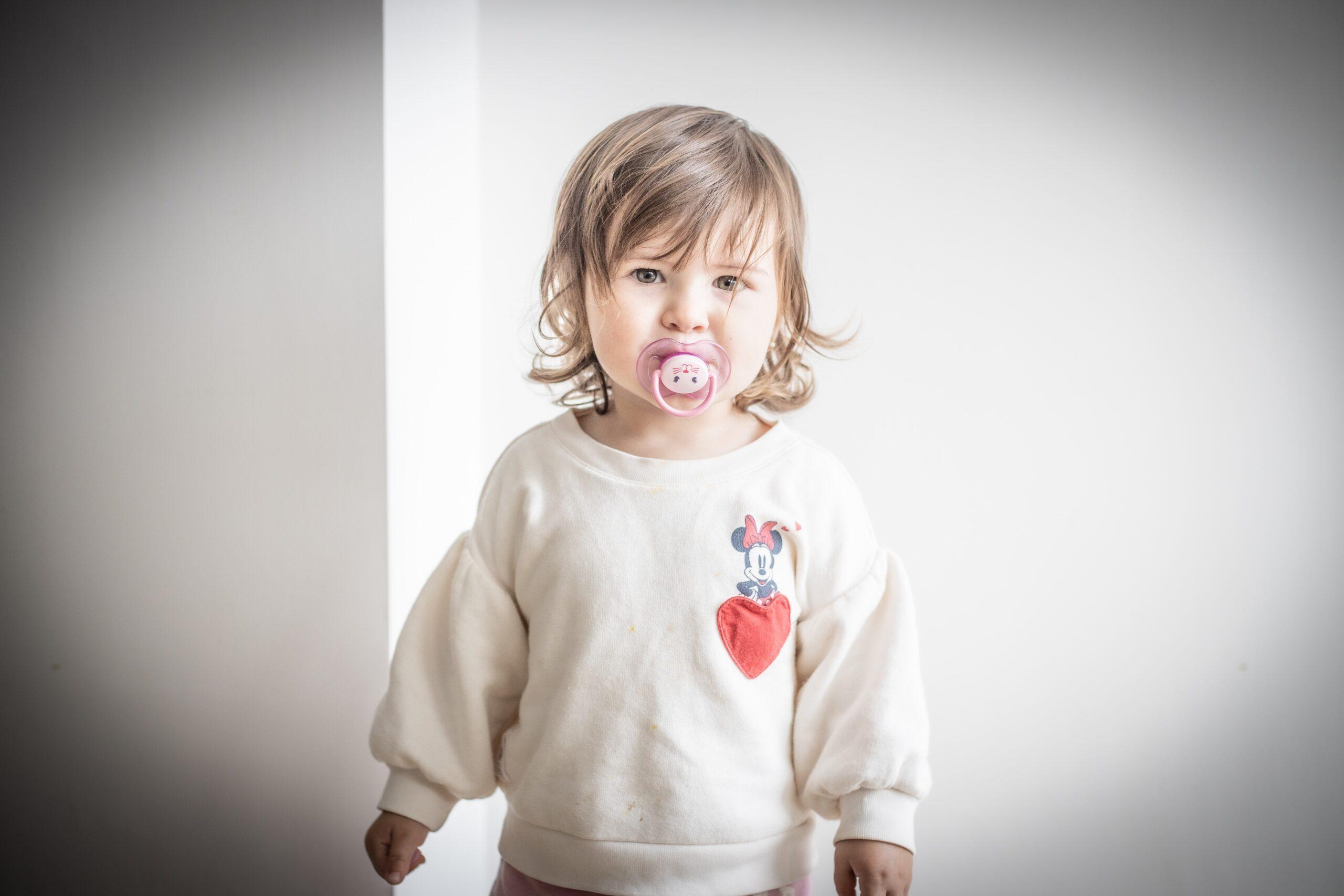Whether it’s called a binky, passy, nook or another cute nickname, the pacifier may be a beloved source of comfort for your child. After all, sucking on a pacifier is a soothing activity for young children. How then, as a parent, do you manage the inevitable milestone of encouraging your child to give up the pacifier? No one said it would be easy. But, is anything about raising children ever simple?
Take me, for example. As a toddler, I was so attached to pacifiers that my mother squirreled away extra ones all over the house and car in case of “emergencies.” One day, when my parents were fed up with the habit, they decided to take away my pacifier cold turkey. I cried my eyes out. I threw major tantrums. And when that didn’t work, I wised up. I found all those in-case-of-emergency stashes, and I was back on the pacifier in no time.
I’m glad to say, I eventually outgrew the habit.
If your child is around age 2, the time may be right for giving up the pacifier. However, there isn’t a universal age for this milestone. Talk to your child’s pediatrician and dentist about the right age for your child, and discuss a method that may work for your family.
Some families prefer the cold-turkey approach. Tip: Scour your home, car and outdoor play areas to make sure there are no extra pacifiers to be found. Other parents decide that a gradual process is best. Gradual weaning may take days, weeks or longer depending on the child.
Whether you opt to remove the pacifier slowly or all at once, find a time when your child is likely to be successful. If your child is already facing challenges or transitions, such as illness, potty-training, a new baby at home or a move, wait for things to settle. Your child will feel more secure, and you’ll have greater reserves of energy – and less temptation to give in to your child’s demands.
Limit use of the pacifier outside of your home.
You might start by limiting use of the pacifier outside of your home. This is especially helpful if your child is entering a childcare center that discourages the use of pacifiers. Next, limit its use to certain rooms or times of day. For example, you might say the pacifier is only for naps or bedtime, or you might tell your child that the pacifier can’t be used while watching videos or TV. Turn the limit-setting into a game to keep it positive: “Let’s see if you can use your binky only in your room.”
Plan the goodbye.
Some parents plan a special visit from the “Binky Fairy.” To do this, gather up all the pacifiers and put them in a box that the fairy will then “take to all the babies who need them.” In return, the fairy leaves a special toy or treat. Another option is to help your child “put the passy in the trashy.” Collect all the pacifiers and, together, haul them out to the garbage can on trash day. Choose whatever goodbye story or ceremony best suits your child, or invent one yourself.
Make a chart.
You may want to try a reward chart with stars or stickers to show pacifier-free success. Consider giving your child small rewards (not candy or sweets) when your child achieves a breakthrough, such as going down for a nap without the pacifier. Some parents promise a big reward when the binky is gone for good, like a coveted toy, special outing, or event.
Be consistent.
If your child frequently wakes up during the night asking for binky or has tantrums during the day, you’ll probably feel sleep-deprived and on edge as you try to remove the pacifier from the home. Though you may be tempted to hand over the pacifier, once you’ve taken it away, don’t give it back. This sends a confusing message to your child. Get some extra support during the challenging days and nights that may ensue.
Be positive.
Affirm your child so he or she can reach this milestone with as little stress as possible. Never punish or threaten your child during the process of removing the pacifier – this might spur a need to cling to the pacifier even more tightly.
Stay busy.
For a smooth transition, schedule fun activities to take your child’s mind off the pacifier and prevent boredom. Spend time outdoors, go on outings, invite friends over to play. Help your child to keep his or her mouth busy. Encourage him or her to sip drinks through crazy straws, blow bubbles, and explore horns and kazoos. Talk, make up rhymes, sing together, and practice whistling.
Offer comfort.
Your child may need additional soothing during this time. Let caregivers know what is occurring. Notice when your child is tired, hungry, thirsty, and frustrated, allowing you to respond to needs quickly.

